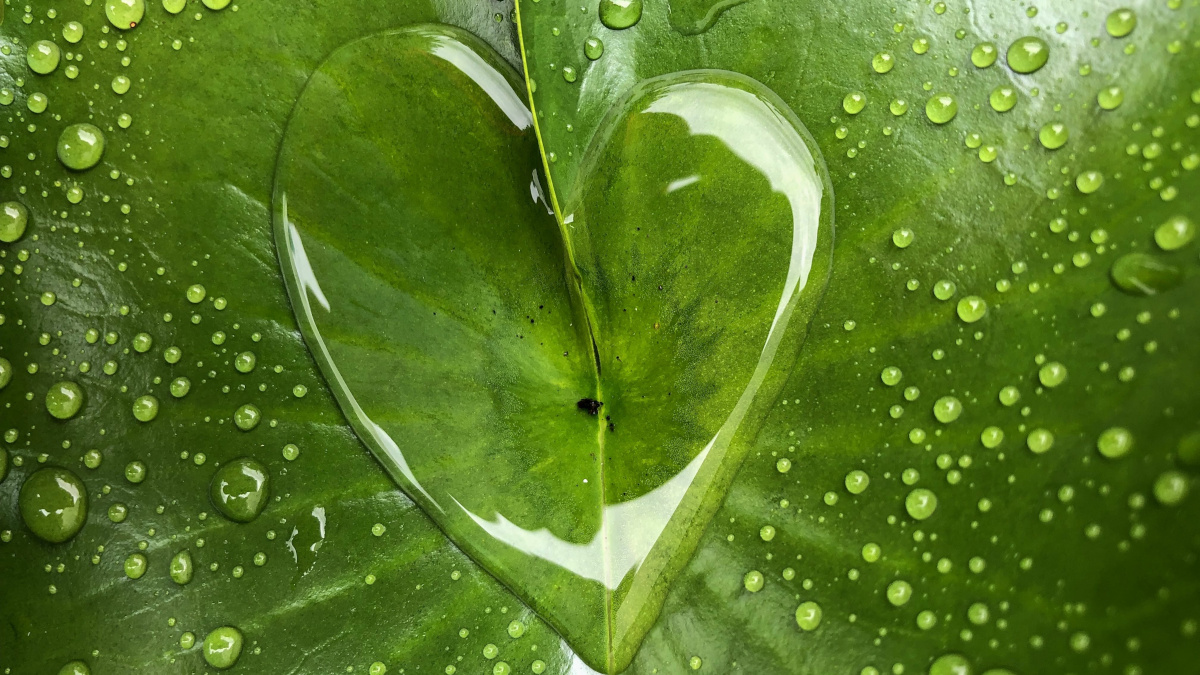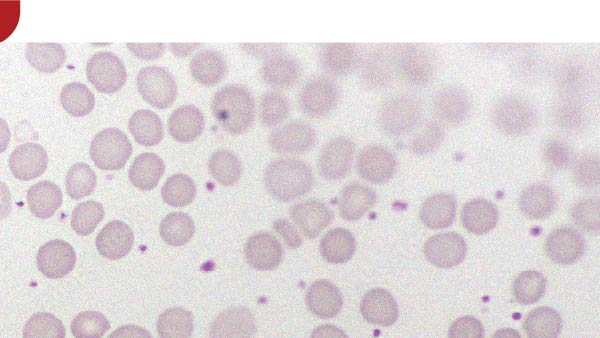The 6 best medicinal plants for the heart
Since ancient times, humans have used the image of a heart to depict the concept of life. They quickly learned how to identify those plants which support a healthy cardiovascular system. Discover the 6 most effective such plants.

Hawthorn and cardiac health
Hawthorn is shrub often found growing at the edge of forests. Featuring sharp thorns, it is widely utilised in phytotherapy, where all parts of the plant are used:
- the buds;
- the flowering tops when white in colour;
- and the red berries.
The plant is known to help support normal function of the cardiovascular system(1). It appears to act more specifically on oxygenation of the heart and exercise tolerance. It is available in the form of dietary supplements (such as Cardio Booster, which also contains B12 and Q10... or Tensix, a formulation rich in celery and potassium).
Lemon balm helps support the circulation and heart
Lemon balm is a plant with mint-like leaves. It has a similar scent to lemongrass or verbena, and is often used to make infusions.
Native to the Mediterranean basin, this plant now grows in any region with a temperate climate.
In phytotherapy, it is the leaves, flowers and stems which are normally used as they are known to support healthy circulation and thus the cardiovascular system in general (2).
Olive leaves and blood pressure
Theolive tree is a favourite with garden designers for its typically Mediterranean look. It does indeed grow primarily on the Mediterranean coast, in the south of France and in the Maghreb.
Mainly used for its fruit, olives, which are enjoyed in many forms (whole, pieces, oil, etc), this tree is also of interest for its leaves, which contain active ingredients widely utilised in phytotherapy.
Oleuropein, a phytochemical compound derived from olive leaves, has blood pressure-regulating properties (3). You can incorporate extract of olive leaf into your diet by taking a supplement (for example Olive Leaf Extract).
Horse chestnut for your heart and venous system
Growing to around 10 metres in height, horse chestnut is called ‘marron d’Inde’ in French – ‘Indian chestnut’, though it is actually indigenous to modern Turkey. Introduced into Europe in the 16th century, the word ‘Inde’ was added because, as with many exotic plants of that period, it was perceived to have added value if it came from India.
The benefits of horse chestnut come from its bark, buds and seeds, the chestnuts.
It has many applications in phytotherapy, the most remarkable of which are related to cardiac, vascular and venous health (3). Horse chestnut is particularly recommended for poor venous return (try, for example, the product Horse Chestnut).
The Ayurvedic herb Centella asiatica
The Ayurvedic plant Centella asiatica (or ‘tiger grass’) is described as semi-aquatic. It flourishes in marshy areas in the tropics. It is found primarily in Indonesia and Madagascar.
In phytotherapy, it is the plant’s leaves and stems which are used for their natural properties.
Centella asiatica is recommended for people with vein problems as it supports cardiovascular and venous health (5). It is also beneficial for mental health and cognition. It can be found in supplement form (for example, in the product Centella asiatica).
Yellow sweet clover for healthy circulation
Yellow sweet clover is a plant indigenous to Europe and Asia. It has a strong smell of cut hay and as a result, is widely used in the perfume business.
In phytotherapy, it is the flowering tops which are used for their content in coumarin, a beneficial substance with venotonic properties.
Yellow sweet clover is known for its efficacy in supporting vein and vascular health, and thus the cardiovascular system as a whole (6). Coumarin, its main active compound, is the key ingredient in certain supplements (such as Lymphatonic, a sweet clover product standardised to 18% coumarin).
References
- Tassell MC, Kingston R, Gilroy D, Lehane M, Furey A. Hawthorn (Crataegus spp.) in the treatment of cardiovascular disease. Pharmacogn Rev. 2010;4(7):32-41. doi:10.4103/0973-7847.65324
- Alijaniha F, Naseri M, Afsharypuor S, Fallahi F, Noorbala A, Mosaddegh M, Faghihzadeh S, Sadrai S. Heart palpitation relief with Melissa officinalis leaf extract: double blind, randomized, placebo controlled trial of efficacy and safety. J Ethnopharmacol. 2015 Apr 22;164:378-84. doi: 10.1016/j.jep.2015.02.007. Epub 2015 Feb 11. PMID: 25680840.
- Barbaro B, Toietta G, Maggio R, et al. Effects of the olive-derived polyphenol oleuropein on human health. Int J Mol Sci. 2014;15(10):18508-18524. Published 2014 Oct 14. doi:10.3390/ijms151018508
- Pittler MH, Ernst E. Horse chestnut seed extract for chronic venous insufficiency. Cochrane Database Syst Rev. 2012;11(11):CD003230. Published 2012 Nov 14. doi:10.1002/14651858.CD003230.pub4
- Razali NNM, Ng CT, Fong LY. Cardiovascular Protective Effects of Centella asiatica and Its Triterpenes: A Review. Planta Med. 2019 Nov;85(16):1203-1215. doi: 10.1055/a-1008-6138. Epub 2019 Sep 20. PMID: 31539918.
- Najmanová I, Doseděl M, Hrdina R, Anzenbacher P, Filipský T, Říha M, Mladěnka P. Cardiovascular effects of coumarins besides their antioxidant activity. Curr Top Med Chem. 2015;15(9):830-49. doi: 10.2174/1568026615666150220112437. PMID: 25697565.
Keywords
1 Days
Quality products
Quality products , efficient and effective customer service. You can’t ask more
CLaudia
7 Days
Good quality product and customer service.
So far, I'm liking this product, and the customer service was very good.
ELZL
14 Days
The products I use are excel·lent
The products I use are excel·lent
ROSAS Josep Maria
22 Days
Delivery is prompt and I never saw a…
Delivery is prompt and I never saw a quality problem with the manufacturing. It is not possible to assess efficacy on a personal basis, since too many factors come into play. Efficacy can only be assessed statistically with a sufficient number of cases.
Roger De Backer
23 Days
I collaborates with the Supersmart…
I collaborates with the Supersmart more than 10 years. Every thing is going good. Quality of the things is good. Delivery comes in time. Five stars definitely !!!
Oleksiy
23 Days
All good
Simple, frictionless site, easy ordering, good delivery updates and execution.
Chris Robbins
25 Days
I feel better
I feel better
Peter Ammann
25 Days
Prompt delivery
Prompt delivery
JAKUB Radisch
27 Days
My new go-to for top quality supplements!
I am buying more and more of my supplements from this superb, high quality company. Cannot recommend it enough. Plus, excellent customer service with a quick, helpful team and speedy deliveries. Highly recommend Supersmart!
Cecilie H.
30 Days
SUPERSMART WHAT ELSE👍
SUPERSMART WHAT ELSE👍
DIEDERLE Christophe
33 Days
Excellent quality products with…
Excellent quality products with innovative formulas, as someone who has been suffering with acid reflux, these supplements have been lifesavers.
Oriana Moniz
33 Days
high quality supplement!
high quality supplement!
GALANT
34 Days
Good service prompt delivery
Good service prompt delivery
Mrs Marcella Reeves
39 Days
I like your clear explanation
I like your clear explanation. And how to make a choice of products for a specific health problem
Ingrid
45 Days
Great product and it arrives quickly.
Great product and it arrives quickly.
SOMMARIVA Gianni



